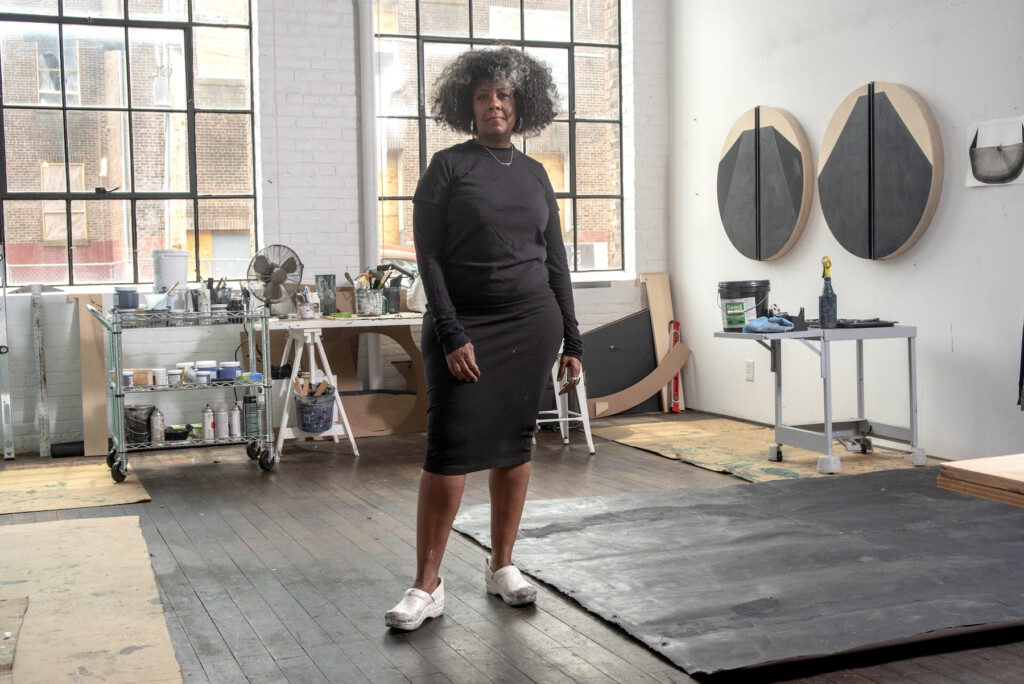“Listening to talks, audiobooks, poems, and music as I am moving materials around the studio, I feel a collective presence even in this moment of distance. I feel a chorus in my space of solitude and I’m able to create because of it,” says Torkwase Dyson, explaining that, for her, this surreal moment has brought a sense of inner peace and optimism.
“It is often in challenging times that humans find freedom, liberation, and justice and begin to see a host of new possibilities and potential.”
Finding or creating pathways toward liberation, she explains, has been an integral part of the Black experience in America since the first slave ship plied the waters of the Middle Passage in 1619.

“For me, the Middle Passage has always been a point of departure, its waters a geography I come back to didactically and politically. There is a before the Middle Passage and an after the Middle Passage, a before the crossing and an after the crossing. In the wake of that journey and in that journey, that is where my stories come from.”
For Dyson, water, as manifest in the rough seas of Atlantic, has come to play an outsize role in her work, the artist having certified as an open-water diver in 2010, to get closer to her subject.
“Through diving, I have been able to have an embodied experience with water. I don’t think I could have gotten to where I am — to think about space and scale the way I think about them now without such an intimate connection with water.”

Gracing Dyson’s studio are a suite of large, heavily impastoed geometric abstractions — each a meditation on the depth, darkness, and dimensionality of the saturated graphite and pitch-black acrylic in which she works.
At the moment, she is producing a suite of small-scale drawings, paintings, and short animations made from those drawings and paintings, intimate studies in her Bird and Lava series, which is to culminate in a monumental sculpture installation at the Wexner Center for the Arts at Ohio State University. These have been created largely in isolation, as the lockdown coincided with the beginning of the artist’s yearlong residency there.
The current pieces, some of which were presented in Dyson’s debut exhibition with Pace Gallery in East Hampton this past August, embody what she calls a certain “at-handness,” as they were executed with only the materials at hand in the studio during the lockdown. There is a certain monasticism, she says, of the process of creating within such calming confines.


